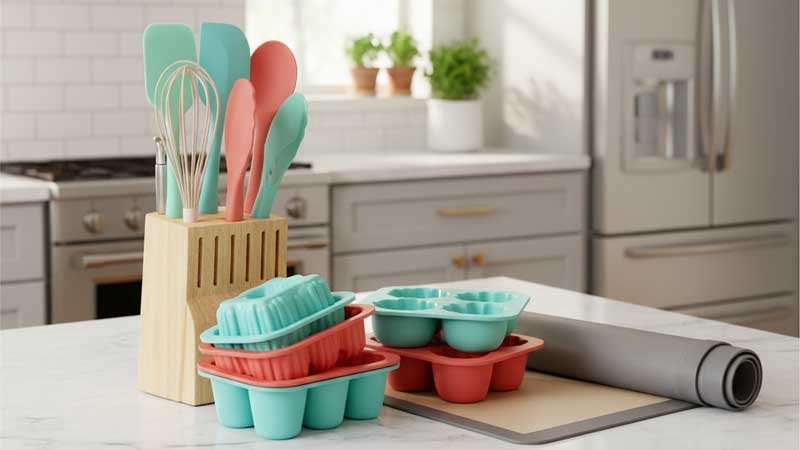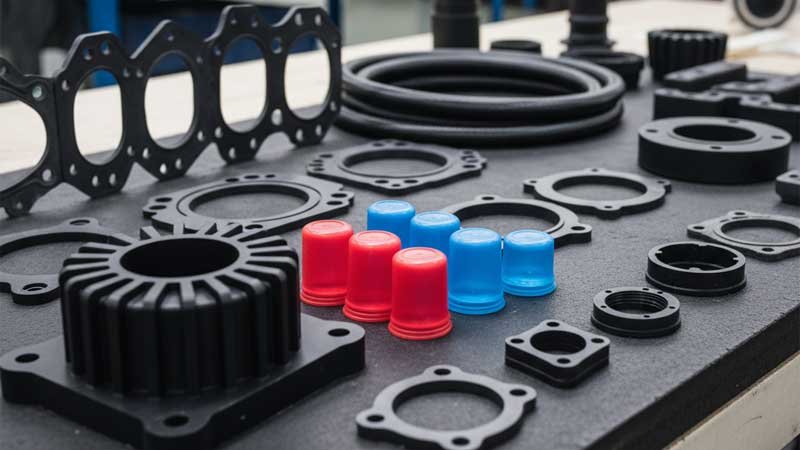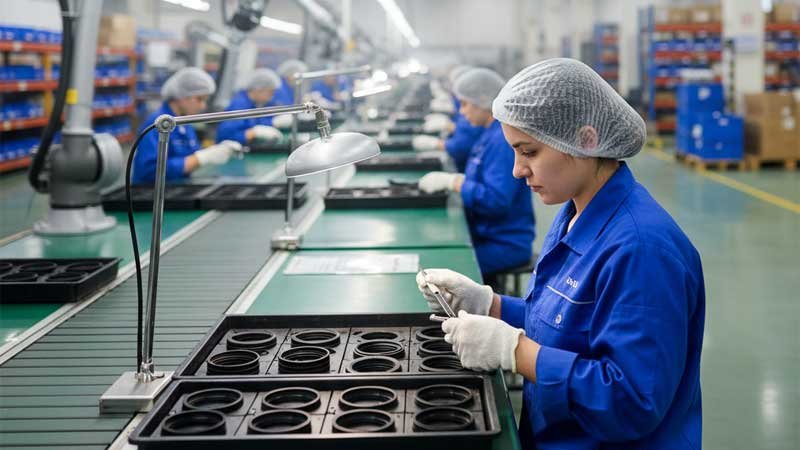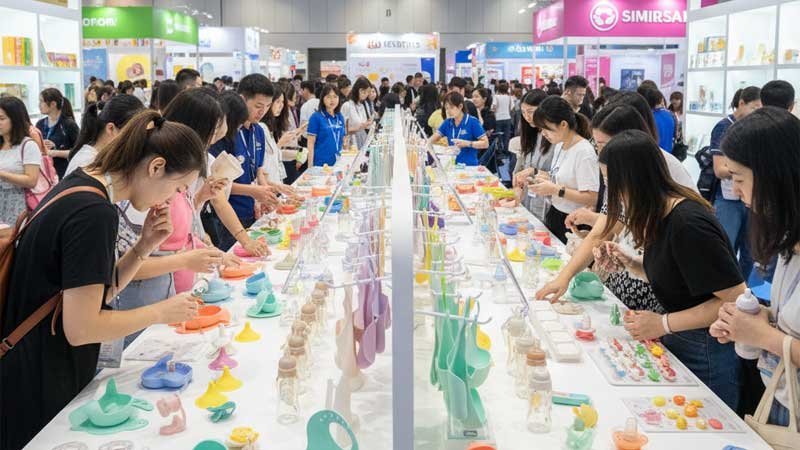Launching a new silicone product in the United States can be both exciting and challenging. Success depends on more than just having a good idea. Businesses must navigate compliance requirements, build reliable partnerships, and choose the right market strategies. This guide explores the key steps you need to take, from understanding the market to developing products, setting up supply chains, and promoting your brand.

What Does the U.S. Market Look Like?
Before entering the U.S., it is essential to understand both market demand and the competitive landscape. The United States is one of the largest consumers of silicone products worldwide. From kitchenware and baby items to medical devices and industrial components, demand is strong across many sectors. However, each segment has its own market size, profit margins, and compliance standards. These differences determine how companies should position themselves.
Market Segments and Applications
- Food-grade kitchenware and household products: Items like silicone spatulas, baking molds, and storage bags dominate this category. The market is large but highly competitive. Consumers focus on food-contact safety, heat resistance, easy cleaning, and eco-friendly attributes.
- Baby products: This includes pacifiers, teething toys, baby spoons, and straw cups. Demand is growing steadily, with parents paying close attention to safety, softness, and non-toxicity. Strict FDA food-grade certification and BPA-free requirements are the norm.
- Medical devices: Examples include catheters, seals, and respiratory masks. The medical-grade market offers high margins but also has high entry barriers. Compliance with standards like USP Class VI and ISO 10993 is required. Buyers in this field value long-term partnerships with reliable suppliers.
- Industrial applications: Products like seals, cable sheaths, and automotive parts fall into this category. Customers demand strong performance in heat resistance, weatherability, and chemical resistance. Most clients are large companies with strong bargaining power. Yet once a partnership is established, orders are large and long-lasting.

Target Consumer Groups
Companies need to define their audience clearly:
- For B2B clients: The focus is on brands, wholesalers, and distributors. They care most about consistent quality, delivery schedules, customization capabilities, and complete certification documents.
- For B2C consumers: Sales are often through platforms such as Amazon, Walmart, or independent websites. Competition is intense. Consumers value affordability, design, ease of use, and brand storytelling.
Competition and Positioning Strategy
The U.S. silicone market is highly competitive. In kitchenware, for example, low-cost items are often supplied by Asian factories, while the high-end segment is led by local brands. New entrants need a clear point of differentiation. Possible strategies include:
- Highlighting material advantages, such as recyclable silicone or filler-free compounds.
- Focusing on functional design, like anti-slip handles or easy-to-clean structures.
- Adapting packaging and branding to U.S. preferences, emphasizing simplicity, eco-friendliness, health, and sustainability.
Pricing also plays a crucial role. Prices set too low may signal poor quality, while prices set too high may block access to mainstream buyers. Companies should conduct research to define their positioning—either a mass-market route or a premium, differentiated approach.
Consumer Awareness and Trends
U.S. consumers no longer see silicone as a novel material. Instead, they recognize it as a daily essential valued for safety and durability. At the same time, sustainability has become more important. More people are choosing silicone as a plastic alternative. Products such as reusable silicone food bags, straws, and collapsible cups have grown rapidly in recent years.

How to Find Partners and Bring Products to Market?
When launching a silicone product in the U.S. market, finding the right partners is important. Whether it’s raw material suppliers, design firms, or manufacturing factories, strong partnerships directly impact compliance, product quality, delivery speed, and competitiveness. To succeed, businesses need a complete system that covers supply chain planning, process selection, and step-by-step product development.
Finding and Evaluating Partners
The search begins with a clear positioning: will you target B2B brands and distributors, or focus on the consumer market? Based on this decision, you can identify the most suitable partners. For example, baby products and medical devices often require factories with FDA, USP Class VI, or ISO 13485 certifications, while kitchenware emphasizes mass production and cost efficiency.
When evaluating potential partners, pay attention to several key points:
- Compliance: Do they hold certifications and testing reports recognized in the U.S. market?
- Experience: Have they worked with well-known brands or gained steady export experience in your field?
- Capacity and Stability: Can they handle large orders and respond quickly to urgent needs?
- Flexibility: Are they open to customization, small trial runs, and prototype validation?
A great partner is not just a contractor, but also a source of technical support and compliance assurance.
Material Selection and Compliance
Once you have secured raw material suppliers and manufacturers, the next step is material choice. Common silicone types include liquid silicone rubber (LSR), high-temperature vulcanized silicone (HTV), and room-temperature vulcanized silicone (RTV). Each field has different requirements. Kitchenware must withstand high heat without releasing harmful substances. Baby products need softness and non-toxicity. Medical devices require strict biocompatibility standards.
In the U.S., key regulations include:
- FDA CFR 21: For food-contact silicone.
- USP Class VI: A common certification for medical devices.
- California Proposition 65: Ensures products avoid substances linked to cancer or reproductive harm.
To reduce risks, businesses should set up a traceable supply chain early. Ask partners for batch reports and compliance documents. This not only helps with customs clearance but also builds market trust.

Product Design and Prototype Development
After confirming materials, the process moves to product design and prototyping. This stage defines functionality and user experience, and it requires close cooperation with partners. Key steps include:
- CAD Modeling: Digital design to confirm structure and dimensions.
- Prototype Testing: Using 3D printing or small molds to check performance and feel.
- Design Optimization: Adjusting based on test results to ensure proper wall thickness, mold function, and easy demolding.
At the same time, businesses should plan for intellectual property protection by registering trademarks, design patents, or utility patents in the U.S. This prevents copying and safeguards market share after launch.
Manufacturing Process and Quality Control
When production begins, the process should match the application:
- Compression Molding: Best for large runs and cost-sensitive kitchen or household items.
- Liquid Injection Molding (LIM): Ideal for baby products and medical devices, with high precision and stability.
- Extrusion Molding: Suitable for tubing, seals, or cable covers.
Quality systems are critical at this stage. Manufacturers should meet ISO 9001 (general quality systems) or ISO 13485 (medical devices). A strong QC process should include incoming material checks, in-process inspections, and final testing before shipment.
Supply Chain and Local Operations
A U.S. launch also requires supply chain planning and local presence. Producing in China or Southeast Asia offers cost advantages, but longer shipping times and customs clearance can create delays. U.S. production ensures faster delivery, though at higher cost.
A balanced strategy often works best:
- Mass production in Asia to keep costs low.
- Warehousing or distribution centers in the U.S. to shorten delivery times.
- Multiple suppliers to reduce risks from raw material shortages or shipping delays.
This approach combines cost efficiency with fast response, helping businesses stay competitive in a demanding market.

How to Choose Sales Channels?
The choice of sales channels often decides how quickly a product can gain traction. For the B2C market, platforms like Amazon, Walmart, and Shopify stores provide direct access to consumers. For the B2B market, businesses can work with distributors, wholesalers, and brand owners, and even offer OEM/ODM services to strengthen cooperation.
Pricing strategy is another key factor. High-end medical and baby products can follow a value-based pricing model, highlighting safety and quality. Kitchenware and daily-use items are better suited for a cost-plus pricing model, making them more affordable to the mass market.
How to Build a Brand and Promote It?
In the U.S., consumers place strong importance on brand story and user experience. Companies need to align packaging design, brand positioning, and promotional strategies to stand out.
- Digital Marketing: Increase visibility through SEO optimization, content marketing, and social media campaigns.
- Trade Shows: Join exhibitions for kitchenware, baby products, or medical devices to expand industry influence.
- User Education: Share blogs and short videos that explain the advantages of silicone, such as sustainability, safety, and durability.
These efforts help raise brand awareness and improve reputation in the U.S. market.

Conclusion
Bringing a silicone product to the U.S. market requires careful planning and execution. From selecting materials and finding trusted partners to choosing sales channels and building brand value, every step plays a role in long-term success.
Are you ready to take your silicone product into the U.S. market? If you need reliable manufacturing support, our team is here to help. Contact us today to explore how we can turn your product idea into a successful launch.